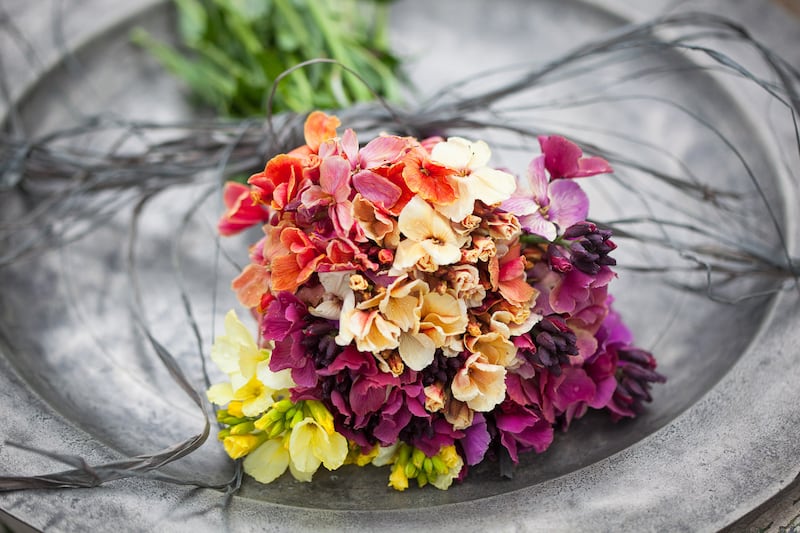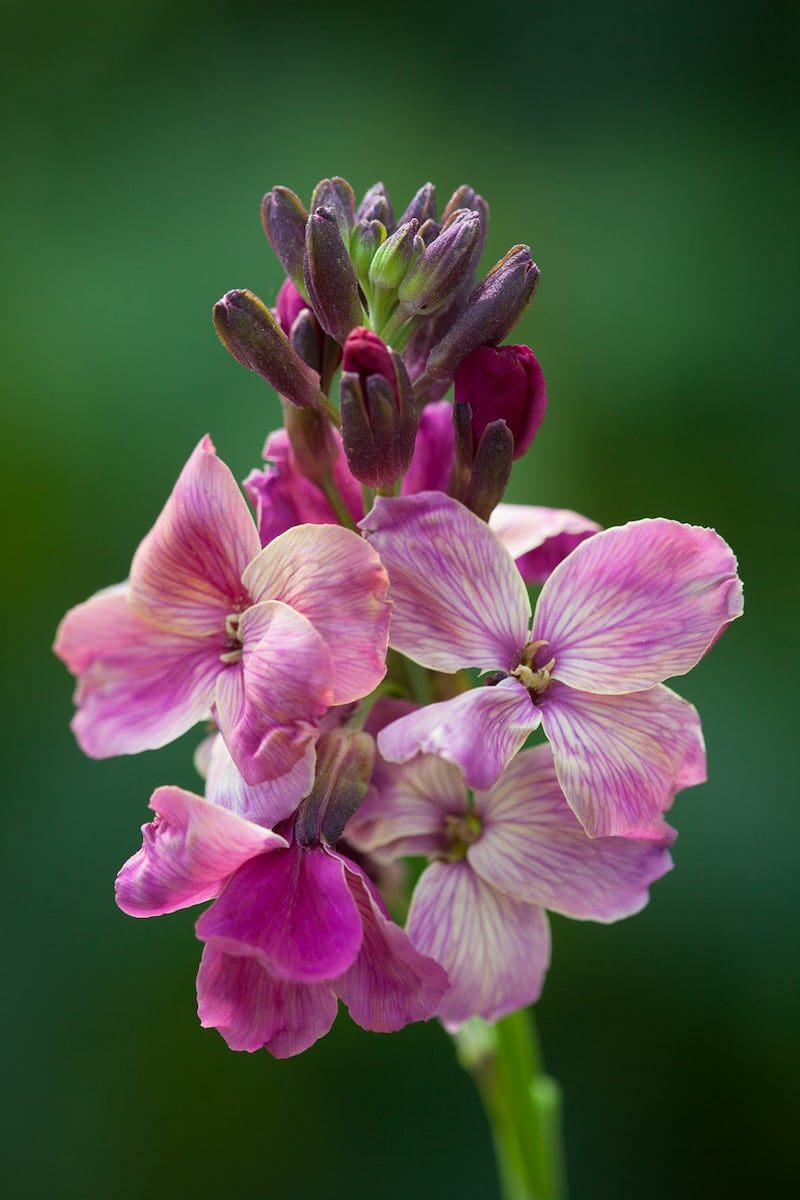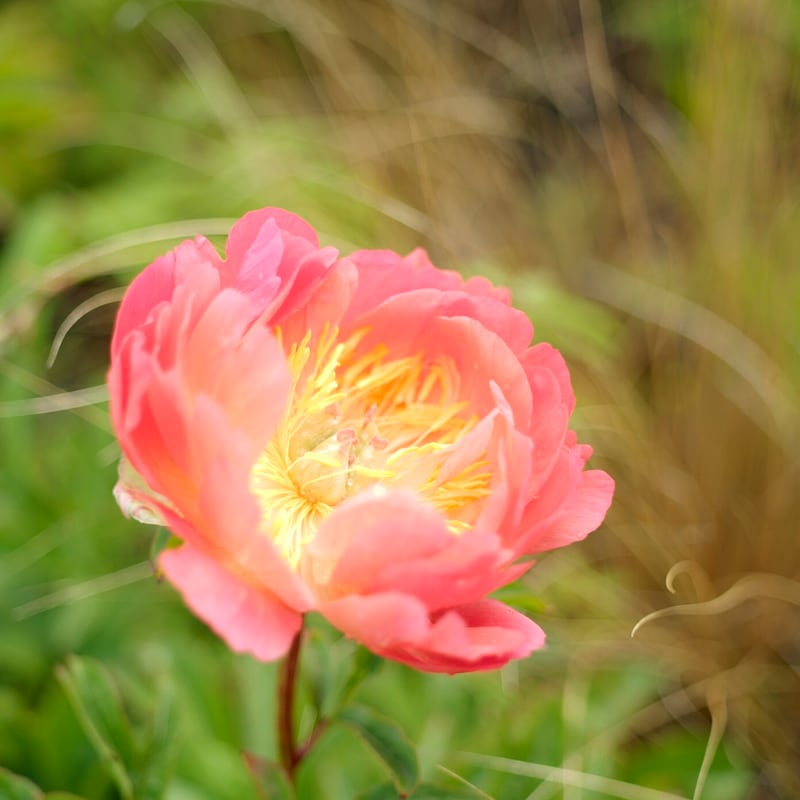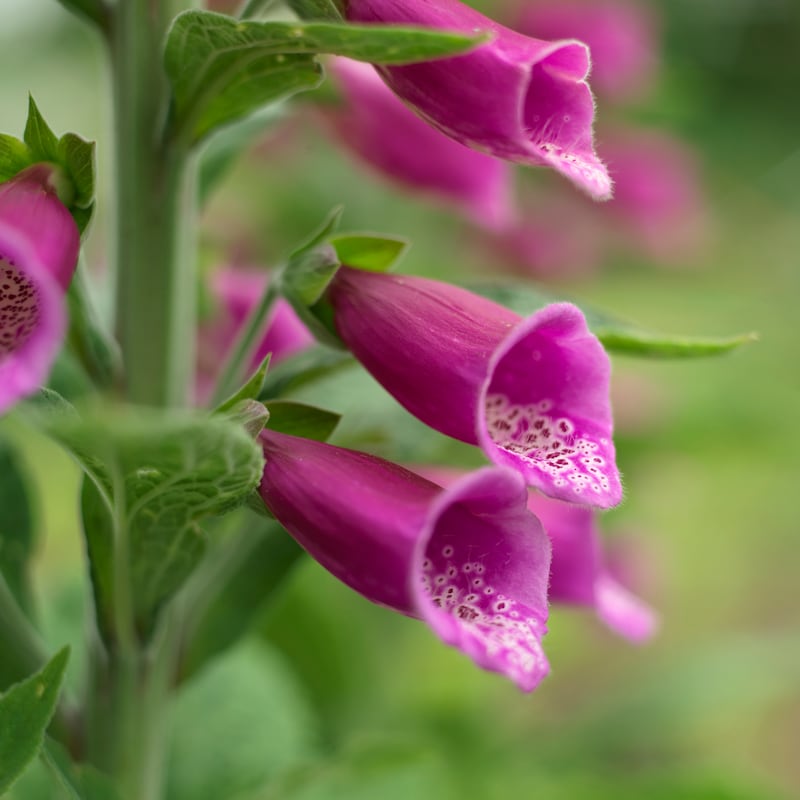It may seem very strange to already be talking about next spring, yet it’s the gardener’s lot to have one eye fixed beadily on the here-and-now and the other fixed forever on the future. And if you want yours to contain wallflowers (or Erysimum cheiri to give them their Latin name), then now is the perfect time to sow these floriferous, long-flowering, hardworking biennials, whose intensely-scented, richly colourful, pollinator-friendly blooms provide the perfect foil for late spring-flowering bulbs.
Forget their unfair reputation for being old-fashioned, something that forward-thinking designers such as the UK's Sarah Raven have proved is complete bunkum. Instead imagine a fiery mix of hot-coloured tulips such as Jan Reus, Brown Sugar and Malaika rising out of a sea of the sultry-red Erysimum Blood Red Covent Garden. Or the subtle, smudged, fruity tones of a perfumed cloud of Eysimum Sunset Apricot flowering beneath a mass planting of the caramel-and-peach coloured double tulip known as La Belle Epoque.
Rather than buying your wallflowers from a garden centre in early autumn as sad bundles of spindly bare-roots, by far the best way to get your hands on generous quantities of plump, healthy plants is by propagating them from seed sown at this time of year.
As well as being surprisingly easy and many times more cost-effective, propagating them from seed also gives you far greater choice in terms of selecting the most vigorous of varieties and loveliest of colour combinations (most garden centres carry a very limited selection). Just make sure to avoid the gaudy seed mixes and the dumpy, overly-compact varieties (two of the reasons why these spring blooming, ultra-hardy biennials fell from favour).
The Sunset series (bred by UK firm Tozers over the last 25 years) is particularly worth seeking out for its vigour and pretty colours and is available from Sarah Raven (sarahraven.com), who also offers some very lovely colour-themed wallflower seed collections.


If soft, romantic pastels are your thing, look out for Sunset Primrose, Ivory White (actually a very pale creamy yellow), Sunset Apricot or Sarah Raven's Smoky Pastel Wallflower Seed Collection. For warm, fruity hues, look for Sunset Purple, Sugar Rush Purple, Purple Shades, Sunset Orange and Giant Pink. For jewel-like shades of red and crimson, choose Vulcan (deep red), the aforementioned Blood Red Covent Garden, Sunset Bronze, Fire King, Ruby Gem and Scarlet Bedder. Along with Sarah Raven, online seed suppliers include seedaholic.com, dobies.co.uk and chilternseeds.co.uk.
Whichever varieties you plump for, the key thing about these biennial kinds of wallflowers is that they must – and I can’t emphasise this enough – be planted in generous amounts if they are to sing in the garden. So instead of a half-dozen plants dotted meanly through a border, plant them closely together (no more than 20cm apart) and in really big swathes. The same goes for spring container displays. Yet another reason to grow these evergreen plants en-masse is to fully enjoy their remarkable scent, a rich, heady, clove-like perfume that can easily fill a garden.
Either sow the seed into pots/trays/modules filled with a good quality seed compost for pricking out and then transplanting in early autumn or sow outdoors in drills in the kitchen garden or allotment, thinning the resulting seedlings to a spacing of 15cm and letting them grow on before transplanting them into their final growing positions between late August - early October (you can slot your tulip bulbs in between them in late autumn). Make sure to pinch out the young plants (use your thumb and index finger to nip off the soft growing tip) to encourage plump, bushy plants.
Last but not least, bear in mind that these are sun-loving plants that demand shelter and sharp drainage and thrive in a neutral to alkaline, not overly fertile soil. So if your garden’s soil is on the acid side, add a sprinkle of lime while if it’s heavy and/or poorly drained, add plenty of horticultural grit before planting.


This Week in the Garden
Lock in the rain
The recent heavy rainfall in many parts of the country has done a lot to replenish worryingly low soil moisture levels. Help to lock it in by covering any areas of bare/exposed soil with a layer of well-rotted manure, garden compost, leaf mould or even a few layers of newspaper covered with grass clippings.
Foxglove time
Foxgloves are one of the joys of the June garden with tall, elegant, pollinator-friendly flower spikes in shades of purple, pink, peach, apricot, white and even pale yellow and rusty orange. Now is the perfect time to sow this biennial/ short-lived perennial's tiny seed for a plentiful supply of flowering plants next summer. Classic foxglove varieties include Digitalis Sutton's Apricot and the white-flowering Digitalis purpurea var alba as well as the stately Digitalis purpurea var. gloxinoides The Shirley (seed suppliers include good garden centres as well as seedaholic.com and chilternseeds.co.uk) Planted in a lightly shaded spot in the garden or allotment and given a moist, humus-rich soil, foxgloves will also often self-seed as long as you leave a few faded flowers to ripen rather than deadheading them all.
Look out for sawfly
Keep a careful eye out for infestations of sawfly on gooseberry bushes as their larvae can quickly defoliate even large, established plants in a matter of days. Obvious signs of infestation include damaged/half eaten leaves and the presence of caterpillar-like larvae (green with black dots) and typically begins in the centre of the bush. If you do find the larvae, avoid spraying chemical pesticides and either handpick them off the plant or use a biological control such as Nemasys Natural Fruit and Veg Production, available to order from mrmiddleton.com.
Visit this
Next Saturday, June 22nd (11am-5pm), Tullynally Castle in Co Westmeath will be hosting its Rare Plants Fair with stalls by many of the country's leading specialist nurseries including Rare Plants Ireland (specializes in unusual trees, shrubs and perennials); Leamore Nursery (specializes in peonies and unusual perennials) and Caherhurley Nursery (specializes in organically-produced herbaceous plants). Admission to the fair is free while the centuries-old gardens of Tullynally Castle, owned by the Pakenham family, is famed for its wonderful woodlands filled with choice specimen trees. tullynallycastle.ie
Try this
The Hotbin Mini Composter, winner of the RHS Chelsea Garden Product of the Year at last month’s RHS Chelsea Flower Show in London, solves the challenge of finding space for a compost bin in a small garden. Designed for smaller households, it has a 100l capacity and measures just 115cm x 45cx 45cm. This innovative product can be used to compost cooked/ raw food and even small bones as well as green waste and weeds in as little as 30-90 days.
Described by its makers as "32 times faster than traditional cold composting", it gets hot enough (up to 60 degrees) to kill possibly harmful pathogens as well as weed seeds, doesn't need to be turned and keeps on working right through the winter months. Available to order online from Irish stockist Quickcrop (€195 plus €3.95 delivery, see quickcrop.ie)
Dates For Your Diary
Sunday June 16th
Limerick Garden Festival, Limerick Milk Market
Talks by garden experts including the Clare-based organic market gardener Jim Cronin, Jim McNamara, Catriona Hassett and Michelle Flannery and specialist plant sales. limerickgardenfestival.com













